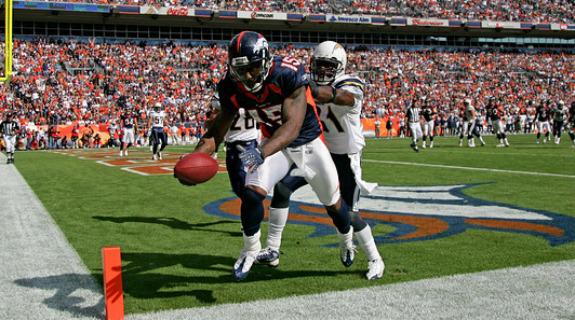Insatiable fan demand for sports and sports-related content across a variety of platforms and devices is driving the next wave of innovation and deal-making, but that doesn’t mean the leagues want to see the breakdown of the traditional model for delivering live games to fans.
“We have a high motivation to make sure the cable and satellite model that exists today will exist in the future,” NFL VP and GM of Digital Media Greg Isaacs told a panel at the E2: Evolution of Entertainment Conference at the University of Southern California in Los Angeles on Friday. “Our hope is that our partners continue to make more money in what they do best. In addition, digital offerings will be a big part of what we do.”
Isaacs was discussing the future of sports entertainment with Michael Cooper, VP of Fox Networks distribution marketing and Ken Fuchs, VP of Yahoo Sports and Games.
The recent introduction of NFL Now—which Isaacs dubbed “Pandora for NFL video"—is a key component of that strategy.
“The reality is now you can take what’s great about sports content and connected devices and personalize that experience,” Isaacs said.
The free app, which debuts this summer, will provide a library of highlight clips, special original content for each team, and archival material from NFL Films. NFL Now also allows users to set their team preferences, so a Chicago Bears fan won’t be bombarded with content about the Green Bay Packers.
But what NFL Now won’t do is give fans access to live games. For that, you’re still going to have to watch the old-fashioned way: on a network that’s paid millions (or billions) of dollars for the privilege. Last Wednesday, (Feb. 5), CBS agreed to carry eight additional NFL games on Thursday nights next fall in a deal worth an estimated $300 million, according to the Wall Street Journal.
NFL Now and other digital products are highlighting the changing face of media rights and deals in sports entertainment. In negotiating new agreements, the networks are finding the digital piece to be the hardest part of the puzzle.
“With our distribution deals, it used to take forever to figure out the bid and the ask,” said Fox’s Cooper. “Now the bid and the ask is the easiest part; the digital part is taking the longest time now because you’re trying to figure out the future.”
Technology and fan habits are changing so rapidly that you can’t really predict what the outcomes will look like, he said.
And while there had been rumblings in the industry that a player like Google might make a deal for NFL rights on its YouTube platform, the panel seemed certain that, for the time being at least, the leagues would be sticking with the traditional players.
Cooper said everyone is aware that there are more conversations happening that hadn’t happened before, with different players coming in, but that seems to be all it is: conversations.
Brief Take: Sports programming is one of the last lines of defense the broadcast and satellite providers have in their fight to keep viewers from moving exclusively to streaming services. It’s in both the leagues’ and broadcasters’ interests to continue to innovate on the digital front to keep those passionate sports fans engaged with their platforms.
Tags:













































__twocolumncontent.jpg)











